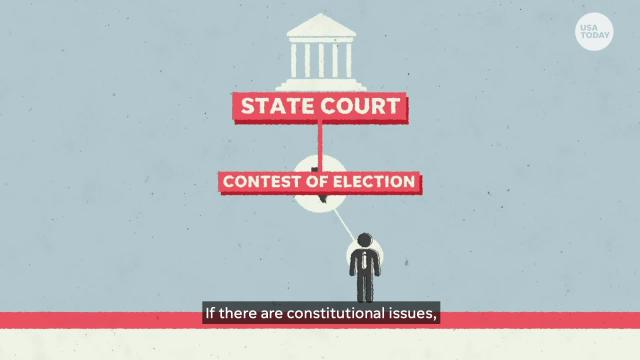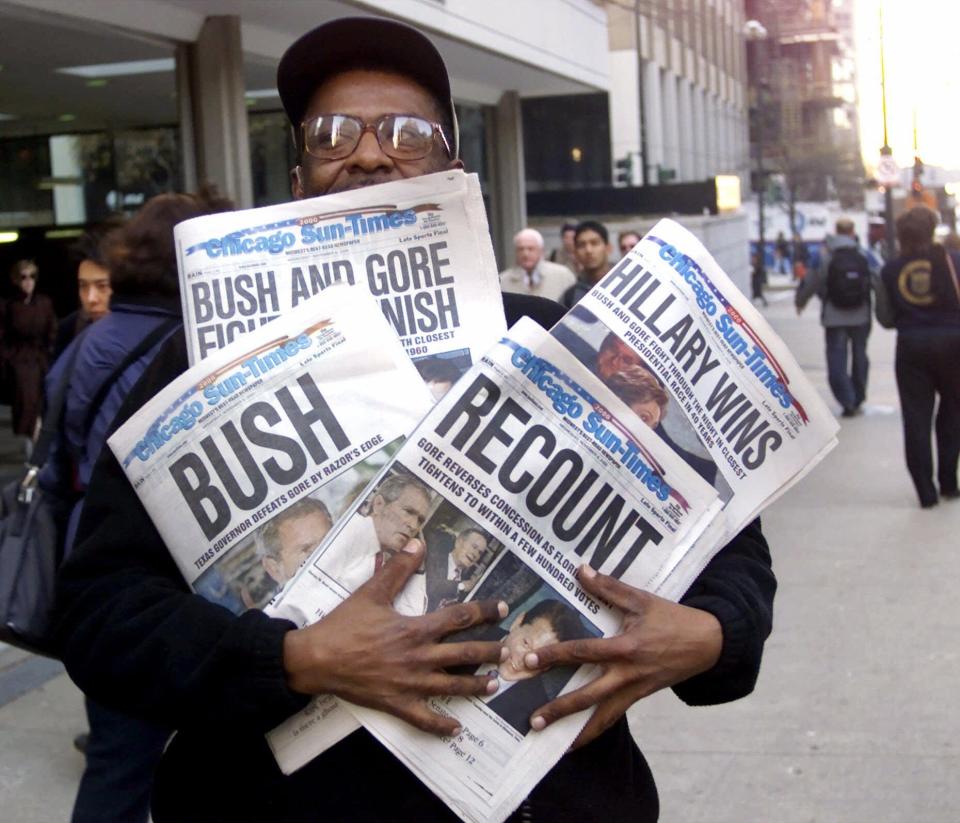Remember Florida's 'hanging chads' in 2000? Here's a look back at America's contested elections.

Twenty years ago, the fate of the presidency hinged on tiny slivers of paper. "Chads" became the source of much controversy in the state of Florida and across the nation in 2000 — which eventually swung the presidential election to George W. Bush despite the popular vote going to Al Gore.
A contested presidential election could happen again in 2020, as both Democratic presidential candidate Joe Biden and President Donald Trump prepare for a possible legal battle waged in the Supreme Court. At its core will likely be mail-in ballots, as their credibility has been repeatedly undermined by Trump in the weeks leading up to the election.
The Trump campaign has already called for a recount of ballots in Wisconsin.
While incredibly uncommon, presidential elections have been heavily contested a handful of times throughout American history. The ever-shifting nature of electoral politics — and the changing machinations by which ballots are cast and submitted — means that each election provides new opportunities and challenges for voting.
Below are three of the most contentious elections in American history.
1876
1876 is perhaps the first truly notable contested election, one that came with massive repercussions for African American voters.
Ohio Governor Rutherford B. Hayes went up against New York Governor Samuel Tilden. A series of events, including voter suppression efforts against African-American voters in the South, per Smithsonian Magazine, meant that the Electoral College was essentially a toss-up. Tilden, however, comfortably won the popular vote.
After months of debate in Congress, Hayes ended up winning with one vote due to the Compromise of 1877 — which gave Hayes the votes in the Electoral College needed to win in exchange for the removal of troops from the South, meaning the end of Reconstruction and the start of the Jim Crow era.
1960

The first year that all 50 states had a say in the election of the next president proved to be a close one.
John F. Kennedy, the Democratic nominee, went up against Republican nominee Richard Nixon in an election that ended up being one of the closest in American history.
While Kennedy comfortably won the Electoral College, he won the popular vote by a very small margin.
The tally proved to be too close among Republicans, including GOP leaders and former President Dwight Eisenhower, according to the Los Angeles Times, who called for a recount. Nixon ended up conceding, and won his election in 1968.
2000

The design of voter ballots in 2000 ended up causing one of the most debated presidential victories in American history.
If you recall, the “butterfly ballot” ended up causing a mass controversy after it was found that voters in Palm Beach County who intended to vote for Gore accidentally ended up casting ballots for independent Pat Buchanan.
A slew of recounts took place, eventually revealing both overcounts — people who voted for more than one candidate — and no-counts among Florida voters.
The no-counts then became the heart of the Gore campaign to call for a manual recount. Americans learned the difference between a “hanging chad,” where a punched piece of paper hung on at one corner, or a dimpled chad, where a ballot was not punched at all but indented.
In any case, “chads” were a moot point by the time it reached the Supreme Court, when the court ruled that recounting some ballots but not others violated the Constitution's Equal Protection Clause. Bush famously won the state by 537 votes, and won the election.
Contributing: Frank Cerabino, Palm Beach Post.
This article originally appeared on USA TODAY: Election 2020: 'Hanging chads', Reconstruction and contested elections